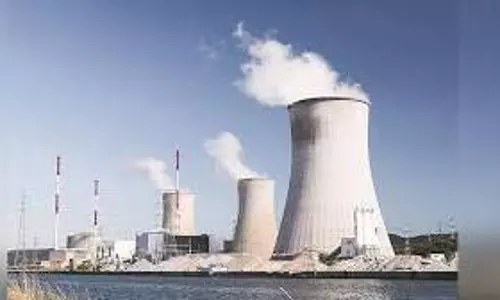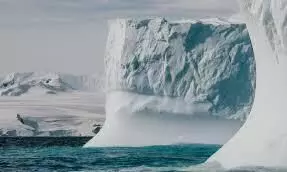
Scientists sound alarm over unprecedented instability in Antarctic polar vortex
text_fieldsThe Antarctic polar vortex, a massive swirling system of cold air above Antarctica, is showing signs of unprecedented instability, raising concerns among scientists.
A series of unusual temperature spikes in the stratosphere has heightened the risk of the vortex splitting - a phenomenon that hasn't occurred in over two decades.
If this happens, it could lead to significant warming in Antarctica and trigger abnormally hot, dry summers in Australia and South America, according to a report by New Scientist.
Typically a stable and persistent feature, the polar vortex has weakened dramatically this year. Wind speeds have dropped significantly, allowing cold air to escape and warm air to invade the Antarctic region. As a result, the vortex has shifted from its normal position, causing colder-than-usual weather in parts of Australia, New Zealand, and South America.
Scientists are warning that repeated slowdowns in wind speeds could lead to a sudden and drastic shift in the vortex's direction, a phenomenon known as sudden stratospheric warming. Combined with the potential for the vortex to split, this could intensify the already extreme conditions being observed.
Simon Lee from the University of St Andrews in the UK explained that even minor disturbances to the vortex can have significant cumulative effects. "Sometimes minor warmings can set the vortex up for something major later on," he noted. "Because the variability of the Antarctic vortex is usually small, even slightly unusual events can quickly escalate into extreme situations."
Chantelle Blachut from the University of Adelaide, Australia, who studies the southern polar vortex, described this year's vortex structure as highly unusual, with competing wind patterns stretching and distorting its shape. "You can see this kind of stretching of the polar vortex by two structures on either side," she said. "Something unusual is definitely happening this year."
While it remains uncertain whether the vortex will indeed split, the current instability is highly unusual and has sparked concerns about potential impacts on global weather patterns. Factors such as climate change, record low sea ice levels, and the effects of the Hunga Tonga-Hunga Ha'apai volcanic eruption may be contributing to this instability.
The potential consequences of a vortex split are far-reaching.
Antarctica could experience record-breaking heat, while Australia and South America may face severe heatwaves and droughts.

















